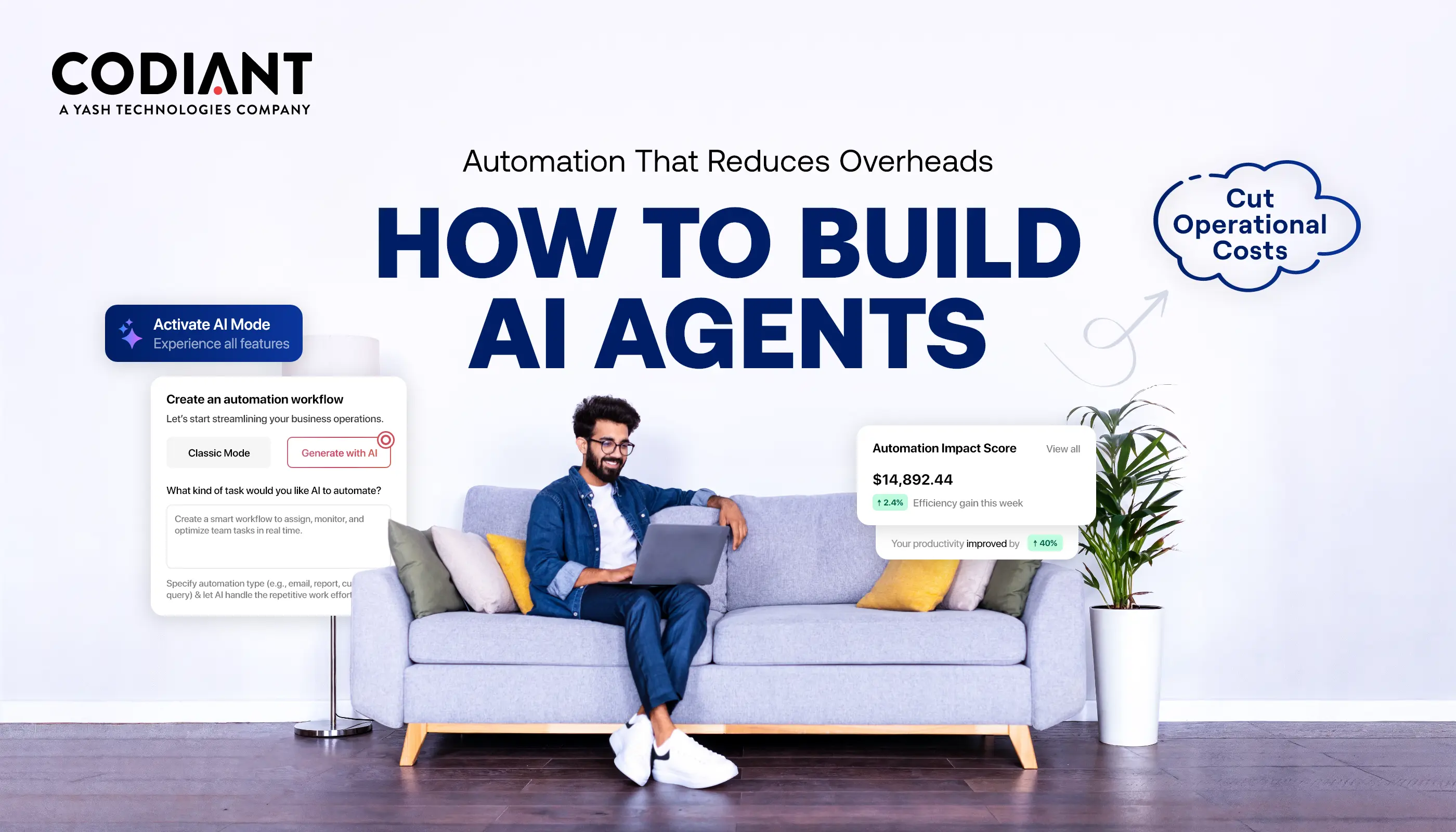Is Your Website Ready for 2025 and Beyond?
Table of Contents
Subscribe To Our Newsletter

Think about it—when was the last time you gave your website a serious update? Is it optimized for the latest tech trends? Does it deliver the kind of user experience your audience expects?
With technology and consumer behaviours evolving fast, a stagnant website can cost you visitors, leads, and even revenue. Are you ready for the demands of 2025 and beyond?
From mobile-first indexing to AI-driven personalization, the digital scene is shifting fast. Staying ahead means adapting your website to meet these changes head-on. But don’t worry—there are steps you can take to future-proof your site and make sure it’s ready to shine in the years to come.
Did You Know?
75% of users judge a company’s credibility based on its website design (a wake-up call for businesses).
Let’s talk about what it takes to create a modern, high-performing website that grows with your business, not against it.
Importance of Website Performance Optimization
It is going to be even more important to maintain your site to be fast and operational when we will get closer to 2025. Here is why you have to speed up your website:

Impact on User Experience
This one is actually a part of ‘How users rate your website’. Research actually shows that it is highly unlikely for a user to wait more than 3-5 seconds depending on the country for a site to load, and if that does happen, most of them will leave without viewing what is there.
Did You Know?
40% of the users will likely leave a given site if its loading exceeds 3 seconds. It’s frustrating to visitors and could also damage the reputation of your brand amongst the users.
It is also essential that the website should be loaded as fast as possible so that the users don’t lose interest and end up surfing other pages where there might be a high possibility of becoming a client.
Effect on Search Engine Rankings
Google favours fast loading websites. If your website is slow, it might not be found as easily, making it harder for people to find you. Google uses some factors called Core Web Vitals to measure how fast your site loads, how easily it works, and how stable it looks as it loads.
Sites that do well in these areas will have a higher chance of appearing higher in any search results and will likely attract more visitors.
Conversion Rates
Website speed is important not just to keep users happy but will also affect your sales. A delay in loading time of just 1 second can cause a 7 percent drop in conversions.
With online businesses, this will mean losing significant sales; hence, optimizing the speed for your website is important, increasing customer satisfaction and boosting your sales.
Competitive Advantage
A fast website in a crowded online world will give you a great edge over competitors. Users have lots of options, and if the website is slow, they will most probably choose a competitor.
This way, by ensuring your website runs well, you will attract and keep more visitors and have an edge over the competition.
Emerging Web Design Trends for 2025

1. Micro Animations: Enhancing User Engagement
Micro animations are small interactive animations that highlight important elements on a page without causing distractions to the user.
- User Experience: Micro animations make the interaction feel faster and more intuitive. Google’s Core Web Vitals shows that animations can reduce the perceived loading time, thus making websites feel quicker.
- Impact: The micro animations are seen to increase user engagement by up to 30%, hence creating a more dynamic and interactive experience for the user.
2. Dark Mode and Monochromatic Designs
Dark mode is becoming the trend. It has been chosen by 82% of smartphone users for it looks great and saves eyes from strain.
- User Preference: This mode is comfortable and saves 63% of battery life on AMOLED screens. Most websites now support both light and dark modes based on user preference.
- Design Benefits: Monochromatic designs go well with the dark mode because they ensure a modern, clean look so that the content is highlighted. It is minimalist with clarity and functionality.
3. Non-Traditional Scrolling Techniques
Designers have started using new scrolling methods to provide unique and engaging experiences on websites.
- Horizontal Scrolling: Horizontal scrolling breaks the norm of vertical scrolling and makes way for creative layouts and storytelling. It is a very interactive approach of engaging users through decent visuals and animations.
- This could be achieved by integrating parallax scrolling which makes the background at a different speed than foreground images. This gives the background depth, thereby allowing user immersion to explore more on the site.
4. Embedded Videos: Grab Attention Instantly
More and more websites are using embedded videos on their homepages to grab user attention fast.
- Engagement Impact: Videos can increase conversion rates by up to 80%. They help users get the message of a brand quickly without having to read much.
- Best Practices: Videos must be short, relevant, and contain clear CTA buttons guiding users to the next step for maximum effect.
5. Responsive and Dynamic Designs
More devices are currently used to access the internet, so responsive and dynamic design is more important for easy navigation.
- Adaptability: Web pages need to work smoothly on both mobiles and desktops as well as tablets. Today, mobiles alone generate more than 54% of world web traffic; hence, every website should be responsive enough for all devices.
- Dynamic Content Loading: The smart loading of content can help in improving the speed of loading by only displaying necessary elements based on the user’s behaviour, and it can make websites faster for better user experience.
Key Strategies for Future-Proofing Your Website in 2025
As technology continues to evolve, it’s crucial to ensure your website stays relevant and effective. This table outlines key strategies for future-proofing your website, focusing on mobile optimization, AI, user experience, security, and emerging technologies for 2025 and beyond.
The Role of AI in Web Development
Artificial intelligence is transforming web development, thus altering the face of designing, developing, and maintaining websites. Here is a closer look into how artificial intelligence is working in web development
AI-Powered Tools in Web Design and Development
AI-driven tools transform the landscape of web design and development. Popularly used tools such as Figma, Adobe XD, and Framer use ML to help in design generation, prototyping, even code generation. For instance, Adobe Sensei streamlines repetitive tasks and supplies intelligent suggestions, which indeed accelerates the design cycle.
GitHub Co-pilot is another revolutionary tool which is giving suggestions for lines of code based on input from developers, thereby helping to enhance coding efficiency while reducing errors.
As of 2024, more than 50% of the web developers are using AI in their applications. Their adoption rate is expected to grow at an annual growth rate of 26.7% from 2021 to 2027.

Improving User Experience with AI
AI enhances user experience in multiple ways through personalization and recommendation engines. For instance, Netflix utilizes recommendation engines based on AI to present the best content for the users depending on their history of watching. Similarly, in web development, AI tailors’ content, product recommendations, and layouts on websites depending on user behaviour.
NLP enables the software to become smarter and even more interactive in user interfaces. AI-driven chatbots and virtual assistants, like those used by Sephora, guide customers through selections of products, creating personalized recommendations based on real-time interactions.
Accessibility Improvements: AI is making websites more accessible. Features like image recognition and text-to-speech enable visually impaired users to interact with websites in ways that were impossible years back.
AI for Web SEO and Performance
AI-based SEO tools and strategies are necessary for a website to be successful. Two of the tools that use AI for analysing content and predicting how it would rank in search engines include Surfer SEO and Clearscope. These tools allow developers to optimize their content and increase its visibility in search engines.
Predictive Analytics: Google Analytics is an AI-powered platform that provides features that can predict user behaviour and point out areas for improvement. Developers can then ensure websites are performing at their best as they see potential problems before they become a problem.
A/B Testing and Personalization: AI automates A/B testing, which further helps in the faster and more accurate production of results. AI can auto-change website elements in order to maximize conversions by processing real-time analysis of the user data.
The Future of Web Development: AI-Driven Innovation
Emerging AI technologies, generative AI solutions and augmented reality, are increasingly going to influence web development. Generative AI can create website designs and layouts from scratch based on user preferences and market data. IKEA, for instance, allows customers to use AR and AI to get a view of how the furniture will appear in their houses before purchase.
Ethical issues: The increase in the utilization of AI within web development leads to more ethical issues especially in terms of data privacy and human dislodgment in the process. Developers should be more transparent in collecting and utilizing data.
Impact on Workforce: AI changes the web development workforce. It automates most mundane tasks but also creates an opening for developers to focus their attention on more complex creative projects. Businesses and the developers will have to evolve with AI to stay ahead.
Conclusion
Is your website geared up for 2025? If not, don’t worry—it’s never too late to make meaningful upgrades. Technology evolves rapidly, but a few thoughtful updates can help your site not only keep pace but also excel.
Think of your website as your digital storefront. If it’s outdated, sluggish, or difficult to use, visitors will leave. But by enhancing speed, incorporating AI, and embracing modern design trends, you can transform it into an inviting, better online reputation, engaging space that keeps people coming back.
The best part? You don’t have to tackle everything at once. Begin with simple improvements, like boosting page load speed or ensuring mobile compatibility. Then, consider exploring exciting features like dark mode, subtle animations, or AI-driven tools to elevate the experience.
The takeaway: investing effort now can ensure your website stays ahead of the curve. Stay adaptable, keep exploring new ideas, and prepare to impress your audience in 2025 and beyond!
Frequently Asked Questions
To improve mobile performance, ensure your website has a responsive design that adjusts to different screen sizes. Also, optimize images and minimize unnecessary elements to make sure your site loads quickly on mobile devices.
Yes, regularly updating your website ensures it stays relevant, fast, and secure. Updating helps you integrate new technology, improve user experience, and stay competitive in a fast-changing digital world.
Yes, Google considers website speed as one of the ranking factors. A faster website is likely to rank higher in search results, which can lead to more traffic and potential customers.
To keep your website secure, ensure it has an SSL certificate, regularly update software and plugins, use strong passwords, and back up your site frequently. This protects your website from hackers and data breaches.
Website accessibility features make your site usable for people with disabilities. These features include text-to-speech, keyboard navigation, high-contrast modes, and other tools that ensure all users can easily navigate and interact with your site.
Featured Blogs
Read our thoughts and insights on the latest tech and business trends
How to Integrate AI in Recruitment and Cut Hiring Time by 70%
- November 13, 2025
- Artificial Intelligence
Recruiting teams face a clear operational challenge: too much manual work and not enough qualified talent reaching the finish line. Even with modern ATS systems, most hiring workflows still depend on human-driven screening, coordination, and... Read more
How to Build AI Agents That Can Speed Up Your Work and Reduce Other Expenses
- November 10, 2025
- Artificial Intelligence
Businesses today are looking for faster ways to work and smarter tools that cut costs. That’s why AI agents are quickly becoming a key investment for companies of all sizes. These autonomous systems can perform... Read more
How to Build a Logistics and Transportation App Like Aramex?
- November 6, 2025
- Logistics & Transportation
In a Nutshell: A logistics app like Aramex helps businesses manage deliveries, track shipments, and serve customers better. Technology is now needed in logistics because customers want fast delivery and real-time tracking. A logistics app... Read more




